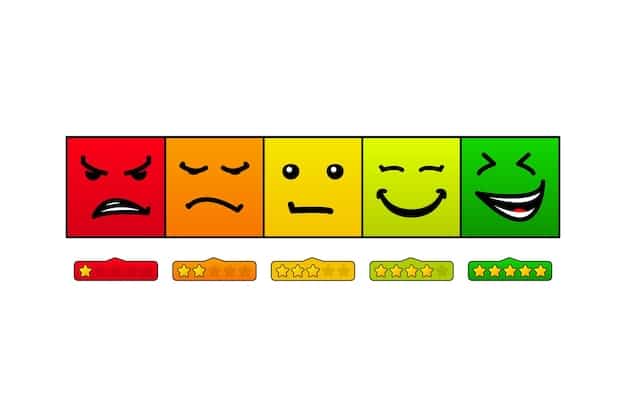Measuring Success: Key Metrics for Inclusive Communication

This article delves into how organizations can effectively measure the success of their inclusive communication initiatives by focusing on three crucial metrics to ensure authentic engagement and equitable reach.
In an increasingly interconnected world, the importance of fostering diverse and equitable environments cannot be overstated. At the core of this endeavor lies communication. But how do you truly know if your efforts are making a difference? This deep dive explores how to begin measuring the success of your inclusive communication initiatives: 3 key metrics for genuine impact.
Understanding the Foundation of Inclusive Communication
Before diving into measurement, it’s crucial to establish a clear understanding of what inclusive communication entails. It’s more than just being polite or politically correct; it’s a deliberate practice of ensuring all individuals feel valued, respected, and heard, regardless of their background, identity, or ability. This means actively removing barriers, both overt and subtle, that might prevent full participation or understanding.
Inclusive communication is a continuous journey, not a destination. It involves a commitment to ongoing learning, self-reflection, and adaptation. Organizations that embrace this philosophy recognize that effective communication is a cornerstone of a truly equitable culture. Without it, even the most well-intentioned diversity and inclusion programs may fall short. It’s about bridging gaps and fostering connections that resonate with everyone.
Beyond Words: The Holistic Nature of Inclusivity
Inclusive communication extends far beyond the words we choose. It encompasses tone, non-verbal cues, visual representation, and the very channels through which information is disseminated. Consider, for example, the accessibility of digital content for individuals with disabilities, or the cultural nuances that might influence how a message is received in different parts of the world. It’s a multifaceted approach that requires careful consideration of the audience’s diverse needs and perspectives.
- Language and Terminology: Using gender-neutral language, avoiding jargon, and being mindful of culturally sensitive terms.
- Visual Representation: Ensuring diverse representation in imagery, videos, and marketing materials.
- Accessibility: Providing captions for videos, alt text for images, and designing content compatible with assistive technologies.
- Channel Selection: Choosing communication channels that are accessible and preferred by various demographic groups.
The goal is to create an environment where everyone feels psychologically safe to express themselves and contribute. This foundation is essential for any efforts to truly measure impact, as it informs what we are measuring and why. It’s about building genuine connections.
Metric 1: Audience Engagement and Reach
One of the most immediate indicators of inclusive communication success is the level of audience engagement and the breadth of its reach. This metric moves beyond simple viewership numbers to assess how deeply and broadly your messages are resonating with diverse segments of your target audience. It’s about ensuring that your efforts aren’t just reaching a few, but are truly heard and acted upon by the many.
To measure this effectively, it’s not enough to simply track likes or retweets. While these provide a surface-level indication, a more nuanced approach involves analyzing feedback from a wider range of sources and understanding the specific demographics being reached. Engagement implies active participation and a feeling of connection to the message. It’s not just about pushing information out, but about drawing people in.
Quantitative Measures: Tracking Interactions and Demographics
Quantitative data offers a solid starting point for understanding reach. This includes website analytics, social media metrics, and internal communication platform data. Look for trends in who is interacting with your content and how. Are you seeing engagement from all parts of your intended audience?
- Website Analytics: Monitor traffic origin, user demographics (if available and GDPR compliant), time spent on pages, and bounce rates across different user groups.
- Social Media Insights: Analyze follower demographics, reach by diverse segments, engagement rates (likes, shares, comments) on inclusive content, and sentiment analysis of comments.
- Internal Communication Platforms: Track open rates, click-through rates, and participation in internal forums or surveys, segmenting data by department, location, or other relevant internal demographics.
Beyond simple numbers, consider the composition of your audience interacting with specific content. Are your messages reaching diverse age groups, different cultural backgrounds, or individuals with various abilities? This depth of analysis reveals whether your communication is truly breaking down barriers and reaching previously underserved groups.
Qualitative Measures: Listening to Feedback and Narratives
While numbers paint a picture, qualitative feedback adds essential color and depth. This involves actively soliciting and listening to the experiences and perspectives of your audience. Surveys, focus groups, and direct conversations can illuminate how well your inclusive messages are being received and understood.
Conducting anonymous surveys designed to gather specific feedback on communication inclusivity can be invaluable. Ask questions that probe into comfort levels, feelings of belonging, and clarity of messaging. Focus groups, when facilitated carefully, can provide richer, more detailed insights into specific communication challenges or successes. This direct feedback is paramount.
Ultimately, measuring audience engagement and reach is about understanding if your inclusive communication is truly living up to its name. Are you engaging a broad and diverse audience in meaningful ways? Are your messages being understood and valued by everyone, not just a select few? This metric helps ensure your efforts are not just performative, but genuinely impactful.
Metric 2: Perceived Inclusivity and Belonging
Beyond outward engagement, a critical metric for inclusive communication initiatives is the subjective experience of your audience: their perceived inclusivity and sense of belonging. This is a measure of how individuals feel when engaging with your communication – do they feel valued, respected, understood, and truly part of the conversation? This goes deeper than just reach; it addresses the emotional and psychological impact of your messages.
It’s not enough for a message to simply be accessible; it must also make the recipient feel seen and respected. A genuine sense of belonging is fostered when communication acknowledges and celebrates diversity, avoids stereotypes, and provides safe spaces for all voices to be heard. This metric requires a more qualitative and nuanced approach to data collection, often relying on direct feedback.

Gathering Sentiment: Surveys and Feedback Channels
To gauge perceived inclusivity, organizations must proactively create channels for feedback that encourage honest and open responses. Anonymous surveys are particularly effective here, as they allow individuals to express their true feelings without fear of repercussions. The design of these surveys is crucial; questions should be framed to elicit nuanced responses about feelings of inclusion.
- Pulse Surveys: Short, frequent surveys asking about feelings of belonging, psychological safety, and comfort with communication practices.
- Open-ended Questions: Provide spaces for qualitative comments on specific communication initiatives, allowing individuals to share their experiences in their own words.
- Dedicated Feedback Channels: Establish anonymous suggestion boxes, ombudsman services, or diversity councils where communication concerns can be raised.
It’s also important to solicit feedback from a diverse range of individuals to ensure that the data collected truly represents the varied experiences within your audience. This means reaching out to different departments, seniority levels, cultural groups, and individuals with different backgrounds. The goal is to capture as many perspectives as possible.
Observational Insights and Focus Groups
Beyond structured surveys, observation and facilitated discussions can provide rich insights into perceived inclusivity. Pay attention to how people interact in various communication settings. Do some voices consistently dominate, while others remain silent? Are there visible signs of discomfort or disengagement among certain groups? These are subtle but powerful indicators.
Focus groups, when moderated by trained facilitators, offer a dynamic environment for exploring these perceptions. Participants can build on each other’s ideas, providing deeper context and uncovering shared experiences related to communication. These discussions can reveal the nuances of how messages are interpreted and whether they genuinely foster a sense of welcome and belonging. It’s about creating a space where people feel comfortable sharing their authentic thoughts.
Ultimately, measuring perceived inclusivity and belonging requires a commitment to listening actively and empathetically. It’s about understanding the subjective impact of your communication on the diverse individuals you aim to reach. This metric helps ensure that your inclusive communication is not just reaching people, but genuinely making them feel valued and heard.
Metric 3: Behavioral Change and Impact
The ultimate test of any communication initiative, especially those focused on inclusivity, is whether they lead to tangible behavioral change and positive impact. This metric moves beyond mere awareness or sentiment to assess whether your communication efforts are catalyzing action, fostering more inclusive behaviors, and ultimately contributing to systemic change within your organization or community. It’s about seeing the results of your efforts in the real world.
Behavioral change can manifest in various ways: increased participation in diversity and inclusion programs, a reduction in microaggressions, more equitable decision-making processes, or a noticeable shift in how individuals interact with one another. This metric is perhaps the most challenging to measure directly, as it often requires observation, long-term tracking, and tying communication efforts to broader organizational outcomes.
Tracking Actions: Policy Adherence and Participation Rates
One way to measure behavioral change is to track adherence to inclusive policies and participation in related initiatives. If your communication encourages the use of inclusive language, for example, are you seeing a decrease in exclusionary terms in internal communications or public statements? Are more people opting into diversity training or employee resource groups?
- Policy Compliance Audits: Regularly assess whether communication policies related to inclusivity (e.g., brand guidelines for diverse representation, language guides) are being followed.
- Participation Metrics: Track enrollment and active engagement in diversity and inclusion workshops, training sessions, and employee resource groups.
- Reporting Mechanisms: Monitor the types and frequency of reported incidents related to non-inclusive behavior or communication, looking for positive or negative trends over time.
It’s important to establish baseline data before implementing new initiatives to accurately measure change. Without a starting point, it’s difficult to ascertain whether observed shifts are truly attributable to your communication efforts. Consistent monitoring is key to identifying trends.
Qualitative Observation and Leadership Buy-in
Direct observation, both formal and informal, can provide powerful insights into behavioral shifts. Are leaders modeling inclusive communication themselves? Are team dynamics changing for the better? Do open and honest conversations about diversity and inclusion feel more commonplace? These qualitative observations, while subjective, can indicate profound shifts in organizational culture.
Furthermore, the level of leadership buy-in and active participation in inclusive communication initiatives is a strong indicator of their potential for lasting impact. When leaders visibly champion and embody inclusive behaviors, it sends a powerful message throughout the organization, normalizing and encouraging similar actions from others. Their actions validate the importance of these initiatives.
Measuring behavioral change and impact requires a long-term perspective and a commitment to integrating inclusive communication into the very fabric of your organizational culture. It’s about moving from words to actions, ensuring that your communication efforts are not just heard, but are actively shaping a more equitable and inclusive environment. This metric proves the enduring value of your efforts.

Integrating Metrics for a Comprehensive View
While each of the three metrics—Audience Engagement and Reach, Perceived Inclusivity and Belonging, and Behavioral Change and Impact—offers valuable insights on its own, their true power lies in their integration. A holistic understanding of your inclusive communication success emerges when you analyze these metrics in conjunction, recognizing their interconnectedness and how they influence one another. It’s about seeing the full picture.
For instance, high engagement without a corresponding increase in perceived inclusivity might indicate that your messages are reaching many, but not genuinely resonating or making people feel welcome. Conversely, a strong sense of belonging that doesn’t translate into concrete behavioral changes might suggest that while people feel good, the communication isn’t compelling them to act or challenging existing norms. The goal is to find harmony and progression across all three.
Creating a Feedback Loop: Learn, Adapt, Refine
Measurement should not be a static exercise but a dynamic feedback loop. The insights gained from tracking these metrics should inform and refine your communication strategies. What worked well? What didn’t? Where are the gaps? This iterative process of learning, adapting, and refining is essential for continuous improvement in inclusive communication.
- Regular Review Meetings: Schedule consistent meetings to review metric data, discuss findings, and identify areas for improvement.
- Cross-functional Collaboration: Involve diverse teams (HR, marketing, leadership, IT) in the analysis to gain varied perspectives and ensure a comprehensive approach.
- Pilot Programs and A/B Testing: Experiment with different communication approaches and test their effectiveness on smaller groups before broader implementation.
By treating your inclusive communication initiatives as ongoing experiments, you foster a culture of continuous learning and responsiveness. This agility allows you to address emerging challenges, capitalize on new opportunities, and ensure your communication remains relevant and impactful in an ever-evolving landscape. It’s about being responsive and proactive.
Challenges and Considerations in Measurement
Measuring the success of inclusive communication initiatives is not without its challenges. The qualitative nature of some metrics, the difficulty in isolating the impact of communication from other organizational factors, and the need for long-term commitment all present hurdles. However, acknowledging these challenges upfront allows for more robust and realistic measurement strategies.
One common challenge is avoiding “tokenism” in measurement. Simply counting the number of diverse faces in content isn’t enough; true measurement delves into genuine engagement and authentic representation. Another is ensuring that data collection methods themselves are inclusive and accessible to all audiences, preventing the exclusion of key voices from the outset. It’s about rigor and genuine inquiry.
Avoiding Superficial Metrics and Data Silos
A significant pitfall is relying on superficial metrics that don’t truly reflect inclusivity. For example, a high number of followers on a social media account doesn’t automatically equate to inclusive reach if the content predominantly resonates with a narrow demographic. Focus on quality over quantity, and depth over breadth.
Additionally, data often resides in silos within organizations. Marketing, HR, internal communications, and diversity and inclusion teams may all collect relevant data, but if this data isn’t integrated and analyzed holistically, a fragmented picture emerges. Breaking down these silos through shared dashboards and collaborative analysis is crucial for a comprehensive understanding. Integration is key.
Moreover, the impact of inclusive communication often takes time to manifest in observable behavioral shifts. Patience and a long-term perspective are essential. Don’t expect immediate, dramatic changes; instead, look for incremental progress and sustained positive trends over time. Celebrate small victories and learn from setbacks. This sustained effort is what truly builds an inclusive culture.
Future-Proofing Your Inclusive Communication Strategy
As the world continues to evolve, so too must our approaches to inclusive communication. Future-proofing your strategy means anticipating emerging trends, technologies, and societal shifts that will influence how people connect and engage. It involves a proactive stance, continuously asking what the next step is in fostering an even more equitable and understanding communicative landscape.
Consider the rapid advancements in AI and automation. While these technologies offer promising tools for creating more accessible content, they also raise questions about bias in algorithms and the need for human oversight to ensure genuine inclusivity. Staying informed and adaptable will be paramount for maintaining relevance and effectiveness in your inclusive communication efforts. It’s about foresight and agility.
Embracing Emerging Technologies Responsibly
Emerging technologies can be powerful allies in inclusive communication, but their adoption must be approached with caution and a strong ethical framework. AI-powered translation tools can bridge language barriers, but they must be carefully vetted for accuracy and cultural nuance. Virtual reality (VR) can create immersive training experiences, but accessibility for users with disabilities needs to be a core consideration from the design phase.
- Ethical AI Use: Ensure AI tools used for communication are trained on diverse datasets and regularly audited for biases that could inadvertently lead to exclusionary messaging.
- Accessibility by Design: Integrate accessibility considerations from the initial planning stages of new technological implementations, rather than as an afterthought.
- Upskilling Teams: Provide continuous training for communication teams on new tools and best practices for inclusive content creation in a technologically advanced environment.
The future of inclusive communication will undoubtedly be shaped by technology, but human empathy, critical thinking, and a steadfast commitment to equity will remain at its core. Tools change, but the fundamental need for respectful, clear, and understanding communication endures. It’s about leveraging technology wisely.
| Key Metric | Brief Description |
|---|---|
| 📊 Audience Engagement & Reach | Measures how broadly and deeply diverse segments interact with your messages, ensuring widespread understanding. |
| ❤️ Perceived Inclusivity & Belonging | Assesses how individuals feel valued and respected by your communication, fostering a sense of psychological safety. |
| 🚀 Behavioral Change & Impact | Quantifies tangible shifts in actions and attitudes, demonstrating real-world results from communication efforts. |
| 🔄 Continuous Improvement | Emphasizes the iterative process of learning, adapting, and refining strategies based on ongoing metric analysis. |
Frequently Asked Questions About Inclusive Communication Metrics
Measuring inclusive communication helps validate efforts, identify areas for improvement, and ensure resources are effectively allocated. It moves initiatives beyond mere intentions, providing concrete data on whether communication truly fosters connection, understanding, and a sense of belonging across diverse audiences, ultimately driving better organizational outcomes and a more equitable culture.
Common pitfalls include focusing solely on superficial metrics like vanity numbers without deep analysis, relying on a single data source, or failing to establish a baseline before implementing new initiatives. Additionally, not involving diverse voices in the measurement process can lead to biased insights, and neglecting qualitative feedback means missing crucial emotional and experiential data needed for true understanding.
Qualitative feedback, through surveys, focus groups, or direct conversations, provides rich context and deep insights that quantitative data alone cannot. It captures emotional responses, personal experiences, and nuanced perceptions of inclusivity. This human-centered data helps explain the ‘why’ behind numerical trends, revealing underlying issues or unexpected successes and guiding more effective communication adjustments.
While challenging to isolate, behavioral change can indeed be linked to communication initiatives, especially when measured over time and triangulated with other factors. Clear, consistent inclusive messaging can influence attitudes, increase participation in diversity programs, reduce exclusionary language, and promote more respectful interactions. Tracking policy adherence and observing cultural shifts reveal the tangible impact of well-executed communication.
Leaders are crucial in measuring success as they champion the importance of inclusive communication, allocate resources for initiatives and measurement, and model desired behaviors. Their visible commitment reinforces the value of inclusivity across the organization. Leaders also help integrate measurement findings into strategic decisions, ensuring that insights lead to actionable change and continuous improvement, driving a culture of accountability and authenticity.
Conclusion
Measuring the success of your inclusive communication initiatives: 3 key metrics — audience engagement and reach, perceived inclusivity and belonging, and behavioral change and impact — offer a robust framework for assessing your progress. By integrating quantitative analysis with rich qualitative insights, organizations can move beyond mere intentions to demonstrate tangible, positive outcomes. Remember, this is an ongoing journey of learning and adaptation, where continuous refinement based on data ensures that your communication not only resonates but also genuinely fosters a more equitable and inclusive environment for all.





